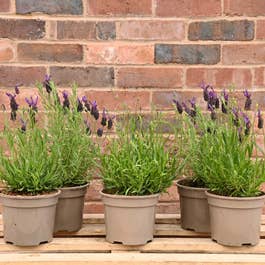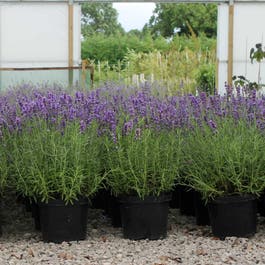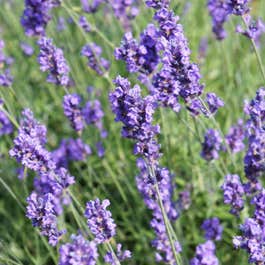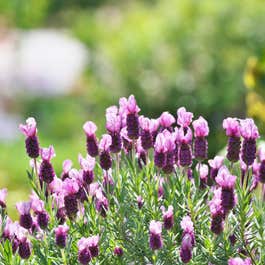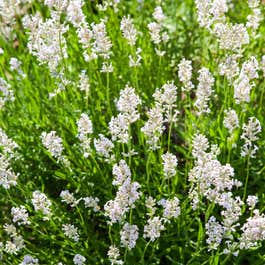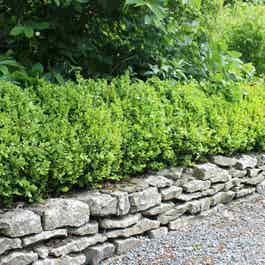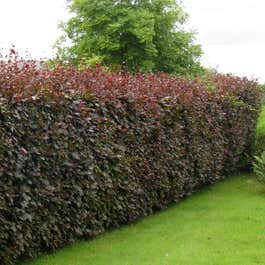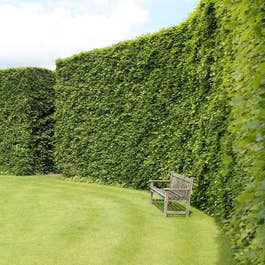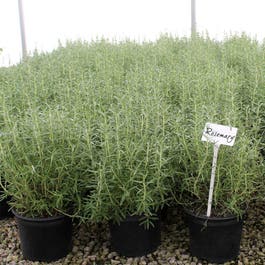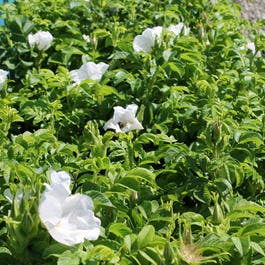Not all of us gardeners are lucky enough to have perfect planting conditions but discovering your garden has dry soil doesn’t mean your gardening days are over. There’s plenty of hedging plants with low moisture and maintenance requirements that delight in dry situations and we’ve put together a list of our favourites for you to choose from.
When looking for hedge plants for dry sites, the foliage can often reveal how well suited a particular plant is to long periods of drought . Hedging with grey-green or silvery foliage is a great choice for dry soils as the pale-ish colour of the leaves reflects the sun’s rays, allowing the plant to retain moisture. Another thing to consider is if a plant has aromatic foliage or a layer of fine hairs on the leaves – fragrant leaves often have a thin oily film, which similar to the hairs, traps moisture in the plant tissues.
Ideal hedging to plant in dry soils
Lavender – All varieties of Lavender including English Lavender, French Lavender, Dwarf Lavender and Hidcote Lavender thrive in dry soil. With a Mediterranean habitat, it’s no surprise that Lavandula Angustifolia hedging is drought resistant and with grey-green, aromatic foliage, it has all the essential features to help it to make the most out of the little moisture it requires. Perfect for borders, rockeries and cottage gardens, Lavender hedge plants not only fill your garden with a wonderful fragrance but they are extremely bee-friendly, so will create a vibrant, buzzing garden feature for you to enjoy.
Box – Being drought tolerant is just one of the many fantastic features this hedging species has to offer, which is why it’s secured the number one spot in our most popular plants for low formal hedges. Buxus hedge plants are extremely tolerant of tough growing positions and so can handle sites such as banks or slopes, where other hedging species may struggle.
Purple Beech – The attractive foliage of Purple Beech hedging makes it a popular choice before you even consider that it is tolerant of dry soils. Although not technically considered an evergreen species, similar to Green Beech, Purple Beech holds its foliage throughout the winter until new spring foliage arrives. Fagus Sylvatica Purpurea is the ideal hedging choice if you are faced with a difficult site and dry conditions, and it will provide a striking boundary hedge or screen.
Rosemary – Similar to Lavender, Rosemary hedge plants derive from the Mediterranean and so are used to dry environments. This aromatic herb will thrive in both dry and stoney sites, making it great to use in rockeries or gravel gardens. Planting Rosemary bushes will reward you with aromatic foliage that can be used as a culinary herb, or simply to create a fragrant pathway through your garden.
Pink Ramanus Rose – If you think dry soil can prevent you from having a bright, attractive flowering hedge, Rosa Rugosa Hedging will prove you wrong. This versatile plant offers large pink flowers in summer, followed by rose hips and butter-yellow foliage in the autumn, and is popular with a large variety of wildlife, all whilst keep out intruders with its thorny foliage. Pink Ramanus Rose hedge plants are great in both dry soil and shaded positions, and even grow well at the coast.
Although all of these hedging plants are a great choice if you’re faced with dry soil, they do still need to be watered well when first planted and you should continue to water regularly throughout their first season. Once fully established, you can reduce watering as they will be much more drought tolerant.



